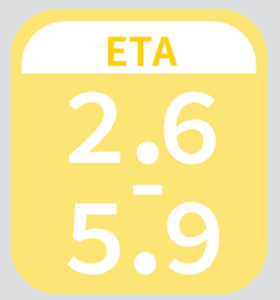Patent Analytics and the 3 Personalities of Patent Prosecution

Why is it so difficult to predict the course of patent prosecution? To begin, patent law and patentability requirements are hardly black and white. Patentability is often open to interpretation, and reasonable minds often differ in their opinions. Moreover, the patent process is not automated or handled by artificial intelligence. Patent applicants do not deal with the USPTO as an entity as much as with a single individual—the assigned patent examiner, who has one of three personalities. As objective as the USPTO strives for patent prosecution to be, all people, including patent examiners, have their own unique biases, views and tendencies based on their knowledge, moods and life experiences. Not to mention that each patent examiner’s experience at the USPTO—the cases they have handled and how they have been trained—all play a role in how they evaluate an invention’s patentability.
Patent examiners are so complex that using straightforward patent statistics to try to predict their behaviors just will not cut it. Patent statistics alone fail to tell the whole story behind an examiner’s decisions. A patent examiner’s longer-than-average patent processing times, for example, might be more the fault of patent applicants than of the examiner. A patent examiner’s allowance rate could be low because many applicants abandoned their applications for reasons unrelated to the patent examiner. Similarly, allowance rates are calculated based only upon patent applications that have been granted or abandoned. What about the actions an examiner has taken more recently on pending patent applications? How do we account for those?
A more sophisticated patent metric is needed to account for each patent examiner’s complexities (three personalities). The PatentAdvisor ETA™ algorithm (Examiner Time Allocation), available on the LexisNexis PatentAdvisor® patent analytics platform, corrects many of the handicaps that accompany straightforward patent statistics. As a result, patent practitioners can use a patent examiner’s ETA™ to predict their behavior with greater accuracy. The higher an examiner’s ETA value, the less desirable the patent examiner is from a patent applicant’s perspective. Additionally, ETA analytics have revealed that there are general categories of USPTO patent examiner; understanding which category your patent examiner fits into can help to anticipate how patent prosecution is likely to proceed and inform your actions for better patent outcomes.
“Red” USPTO patent examiners: the ones to watch out for

Of the three personalities, being assigned a “red” patent examiner is often a sign of trouble. Red examiners (those with ETA values of 6 or greater) tend to grant fewer than 15 patent applications per year, and only after lengthy and difficult patent prosecution. Their recent patent prosecution actions suggest that convincing them to grant a patent will be challenging, so patent applicants should seriously consider whether it is worth the time and money to go head-to-head with a red examiner, or whether filing for an appeal will be a more effective course of action.
“Yellow” USPTO patent examiners: predictable and even keel

The bulk of USPTO patent examiners are “yellow” examiners with PatentAdvisor ETA values of 2.6 to 5.9. Neither quick nor slow in making their final patentability decisions, yellow patent examiners grant somewhere between 15 and 150 patent applications each year. The key to facing a yellow examiner is to use PatentAdvisor™ analytics to find actions that have historically helped the patent process move smoothly against the examiner in the past, such as holding an interview or filing an early Request for Continued Examination RCE. The best course of action is the one tailored to the patent examiner assigned to your case.
“Green” USPTO patent examiners: an applicant’s best friend

Every patent practitioner’s dream is to be assigned to a “green” patent examiner with an PatentAdvisor ETA of between 0.1 and 2.5. Their prosecution lengths are generally short, and they grant over 150 patent applications each year. Green usually means clear skies and smooth sailing, but patent practitioners facing green examiners should, of course, still use USPTO patent data and analytics to guide their decision making.
Patent examiners are complex, and the sophisticated ETA patent metric is the best tool for predicting examiner behavior. Of the three personalities – red, yellow or green – each USPTO patent examiner has their own biases and tendencies. The advanced analytics available on the PatentAdvisor patent prosecution platform enable patent professionals to adapt their strategies accordingly for better patent prosecution outcomes.
Learn more about PatentAdvisor.
Read How to Compare Patent Prosecution Performances to learn more about the PatentAdvisor ETA exclusive metric.
Adjusting for Analysis: Using Patent Examiner Clues to Predict Behavior explains how the ETA solution allows patent professionals to predict prosecution durations and examiner difficulties with even greater accuracy than ever before.

Need more predictability in the patent prosecution process?
Learn how to develop successful IP strategies and proficiently manage patent applications throughout the entire prosecution process using data-driven insights and advanced analytics.
